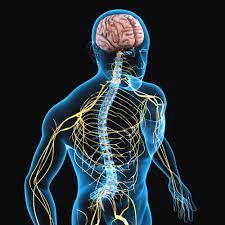Rewiring the mind: how neuroplasticity helps us adopt positive habits
We are designed to change. Our brain can adapt, rewire, and form new connections throughout our entire life. Neuroplasticity allows us to break bad habits and create healthier and more sustainable patterns. Understanding the brain’s ability to transform is the key for long-lasting life changes.

Neuroplasticity refers to the brain’s ability to change and reorganise itself by forming new neural connections. Every time we repeat a thought, action, or behaviour, our brains strengthen that neural pathway. The more we repeat something, the easier it becomes. This is the key to both building good habits, and undoing negative ones.
How to reinforce new healthy, sustainable behaviours
The brain creates new behavioural patterns through repetition and emotional reinforcement. If a behaviour feels good, useful, or safe, the brain flags it worth repeating. This applies to everything. Over time, what starts as conscious effort becomes automatic.
On average, it takes about 66 days to form a new habit though it can range
from 21 to over 100 days depending on the complexity and consistency
So, why do we keep unhelpful negative habits? The answer is simple, although designed to change, our brain loves familiar pathways. Every time we repeat a behaviour eg. reaching for fast food when stressed or scrolling late at night, we strengthen the neural pathways associated with it.
Steps to adopt long term change
From a neuroplasticity perspective, creating a positive habit means rewiring the brain to associate that behaviour with pleasure, identity, and reward. The habit then will become automatic over time.
When implementing a new habit, like practising regular physical exercise, consistency and
repetition should always be prioritised over intensity and perfection
Some things to remember when wanting to implement a new positive behaviour like regular exercise.
🧠The brain learns best through
repetition,
not intensity. A consistent small amount of exercise is preferable to hour-long workouts.
🧠Practicing habit stacking by linking exercise to something we already do every day eg. run on the way to work. This will be context-based memory making easy for the brain to get used to the new habit.
🧠 Stimulating the dopamine system and create a habit-dopamine loop by focusing on the emotional reward. The brain prioritises what feels good, safe, or satisfying. Once the exercise routine has been completed, acknowledge that “You feel stronger”, “You did something for yourself” or that “You feel more energised”.
🧠 If a session has been missed, simply forgive yourself and get back into the loop. Consistence should always go over perfection.
How to let go of bad habits
The brain is wired to seek pleasure and avoid discomfort, so it clings to habits that provide quick relief, even if they cause harm later. Many "bad" habits offer instant gratification (like dopamine hits from sugar, internet scrolling, or procrastination).
Unhealthy behaviours are often coping mechanisms like eating too much fast-food.
Even if they’re destructive, they feel safe, familiar, or soothing
When wanting to get rid of negative behaviours like eating too much fast-food, we should focus on the following:
🧠 Identify the trigger: when do I crave fast food? (e.g., stress, boredom, fatigue)
🧠 Interrupt the pattern: the brain strengthens whatever it repeats so use a short meditative pause; breathing exercises; stepping outside; or going for a walk to stop the reaction after the trigger.
🧠Plan ahead and be prepared to replace the habit when the need arises eg. buy nice ingredients in advance so that you can easily cook or, drink water, artisan kombucha or fruit teas. Sometimes we think we are hungry, but in reality, we are thirsty. Keeping hydrated is a great way to stay focused and balanced.
🧠What we say becomes what your brain believes. Positive language can help us reinforce new behaviours eg. instead of “I can’t eat fast food” try “I choose meals that nourish me” or “I don’t eat fast food because I feel better without it”.
The more often we interrupt and redirect, the faster the brain stops prioritising that thought or behaviour. Over time, the neural pathway weakens, and the negative behaviour loses its grip.
Visualisation is a powerful tool for change
Neuroplasticity also allows us to train our mind to attract what we want. This idea is based on the power of our focus also known as “the law of attraction”. Our thoughts direct our brain’s filters to what we focus on shaping what we notice and how we act.
Our brain doesn’t know what thoughts are real and what aren’t.
Visualising our goals strengthens neural pathways and activates real results
We don’t need a full lifestyle overhaul to make meaningful change. Small, daily actions can create lasting impact. These shifts can begin to feel natural in as little as 3 to 4 weeks with consistency.
Every choice we make tells our brain what to value. With repetition, kindness, and patience, we can reshape our habits, mindset, and life using the power of neuroplasticity. Remember is never late to change.















